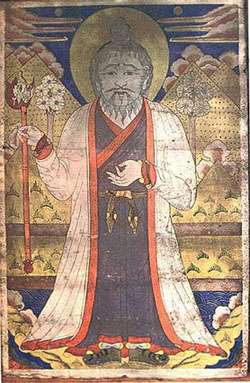 |
"The syncretism of Buddhism
and Shamanism, or the actual imposition of Buddhist religion upon the earlier
deep-rooted Shaman practices and belief system, was a process well
entrenched in the Silk Road areas, starting with the arrival of Buddhism
from India into Tibet and its overlay upon the pre-Buddhistic Bon religious
practices.
The Kalmyks, Orate Mongols who migrated to western Russia in the17th. century, arrived with a form of Shamanism which had been deeply affected by the suppression of Shamanism by Lamas in the 17th. century in Mongolia. Their principal Shamanic-Buddhist deity, the Old White Man, exemplifies the sincerity nature of their religious discourse and practice as Shamanists, whereas Buddhism itself in Kalmykia flourished and took an independent path. Examples of sincerity practices have also been in evidence in Buryatia, although Shaman practices currently and in the past have been more independent of Buddhism than is the case in Kalmykia." Eve Jane Neumann Fredman: "Silk Road Syncretism: Buddhism and Shamanism in Culture clash" (The Third Silk Road Conference at Yale University July 10 - 12, 1998) |